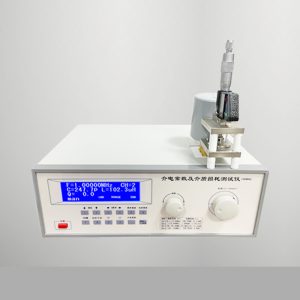Présentation du produit du testeur de constante diélectrique
Le testeur de constante diélectrique est un instrument utilisé pour mesurer la perte diélectrique et la constante diélectrique de divers oxydes métalliques, mica, verre, plastiques, ceramics and other substances. In fact, the purpose of using the dielectric constant tester to measure the dielectric loss and dielectric constant of different materials is to further understand the various factors affecting the dielectric loss and dielectric constant by measuring the dielectric constant and the tangent of the dielectric loss Angle, so as to provide a basis for improving the performance of materials.
There are many methods to measure dielectric loss and dielectric constant, common centralized circuit method, transmission line method, resonance method, etc., Nanjing Exhibition DZ5001 dielectric constant tester uses the high-frequency resonance method, and provides a general purpose, multi-purpose, multi-range impedance test, compared with other test methods, the measurement advantage of high-frequency resonance method is that the measurement accuracy is higher. Donc, the dielectric constant tester is widely used in power plants, test stations, transformer factories, capacitor factories, insulation materials factories, scientific research institutions, schools, research institutes and so on.

Présentation du produit du testeur de constante diélectrique
What are the advantages of DZ5001 dielectric constant tester?
1, the use of large capacitor direct display, high clarity.
2, the number of micro measuring device, direct reading value.
3, the measurement range is wide, the measurement range is 10KHZ-100MHZ.
4, the instrument automatically deducts the residual inductance and test lead inductance. Greatly improve the measurement accuracy.
5, haute précision, the measurement of the numerical accuracy is higher.
6, the instrument is simple to operate, one-click calculation, improve the efficiency of the experiment.
7, in line with the international reference standard GB/T 1693-2007.
